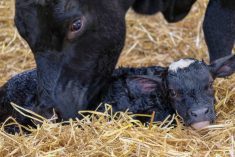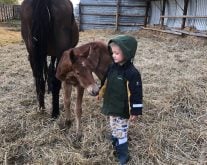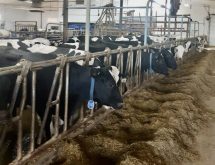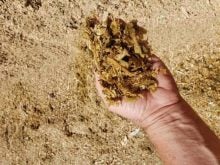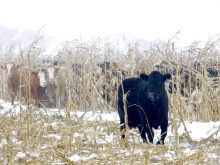I live in Manitoba and continuous flooding rains since our heavy snows melted have delayed corn planting to the point that much of our corn silage this fall will be wet and immature.
However, I travel to other parts of the Prairies and many dairy farms need rain. I suspect that much of these corn fields are going to be ensiled in a much drier condition than normal. Yet this is no different than wet Manitoba silage — ensiled samples should be taken and tested for essential nutrients so the present lactation diets can be reworked and lactating cows can continue to produce milk (and milkfat).
Read Also

Fendt takes a combine on the road in the U.S.
Putting an Ideal combine in fields across different regions has given the brand a chance to prove that the combine is capable of performing well in a variety of conditions.
Unfortunately, ensiling this dry corn silage does not always co-operate to make good feed. That’s because a harvested moisture content of less than 60 per cent might not allow chopped forage to be packed tight, excluding the air needed for fermentation. Just the opposite occurs, namely undesirable bacteria, moulds and other microorganisms that thrive at low oxygen levels and limited moisture. Instead of preserving the corn, the whole ensiling process often becomes compromised and unpalatable corn silage could come out of the bunk once it’s opened.
I remember visiting a 100-cow dairy and the producer forked huge chunks of blue-green mouldy dry corn silage, before he put clean feed into their daily lactation TMR. I don’t think he was successful in getting rid of all this widespread contamination. As a result, his cows’ dry matter intakes were depressed by about 20 per cent on this new silage bag, plus his cows had a higher than five per cent incidence of Left Displaced Abomasum (LDAs). He mentioned that many first-calf cows were showing signs of silent heats and failure to get re-bred. Eventually, the mould in this bag got so bad, that he opened up a new corn silage bag, which was cleaner and these problems disappeared over time.
A small silver lining
Aside from a real threat of mould in dry corn silage, some positive research demonstrates that ensiled dry corn silage contains 75-95 per cent of the overall dietary energy and protein values of normal corn silage, despite the likely lower tonnage harvested per acre. In addition, when whole corn-plant biomass falls below 60 per cent moisture; mature NDF fibre content significantly increases but its respective digestibility in the rumen is often better than normal.
Other dairy science is not so sympathetic to dry corn silage. Some nutritionists point out that corn kernels become like steel ball bearings. This circumstance leads to less grain-energy digestibility in the rumen and lower gut. Thus, dietary energy is made less available for good milk performance.
Regardless of how dry corn silage turns out when ready to be fed, it is very important to take forage samples and send them for a laboratory forage analysis. I recommend crude protein, soluble protein, ADIN, NDF, ADF, NFC, starch and moisture be tested. Nitrates and mould or mycotoxin tests should be done. From these analytical results, we can re-balance such dry corn silage into new lactation dairy diets. Such corrective action might look like this:
- Final TMR moisture. Dry corn silage will lower the TMR moisture content, and could lead to sorting by dairy cows. As a rule of thumb, I recommend adding extra water to a dry corn silage/TMR to maintain a final TMR moisture of 50 per cent.
- Maintain a strict TMR 28 per cent NDF level with 75 per cent from forages. One producer that I knew added 20 lbs. per head of wet brewers to add fibre and increase the moisture of his dry corn silage-based TMR. However, wet mash contains NDF but is not effective NDF feed to promote good rumen function and cud-chewing by dairy cows. In his case, he might have fed less dry corn silage, more wet alfalfa haylage and topped it off with extra water.
- Limit non-fibre carbohydrates. NFC portion of the diet should be limited to 35-37 per cent of the total diet. Starch, which often consists of a significant portion of NFC, should be targeted at 21-25 per cent of the diet, dry matter.
These are three good points to follow to formulate a well-balanced lactation dairy diet. In doing so, we should know as much as possible about the nutrition of our dry corn silage before using it and then treat it like any other corn silage. In this way, we can work this dairy feeding challenge into an opportunity to produce as much milk (and milkfat) as possible.




